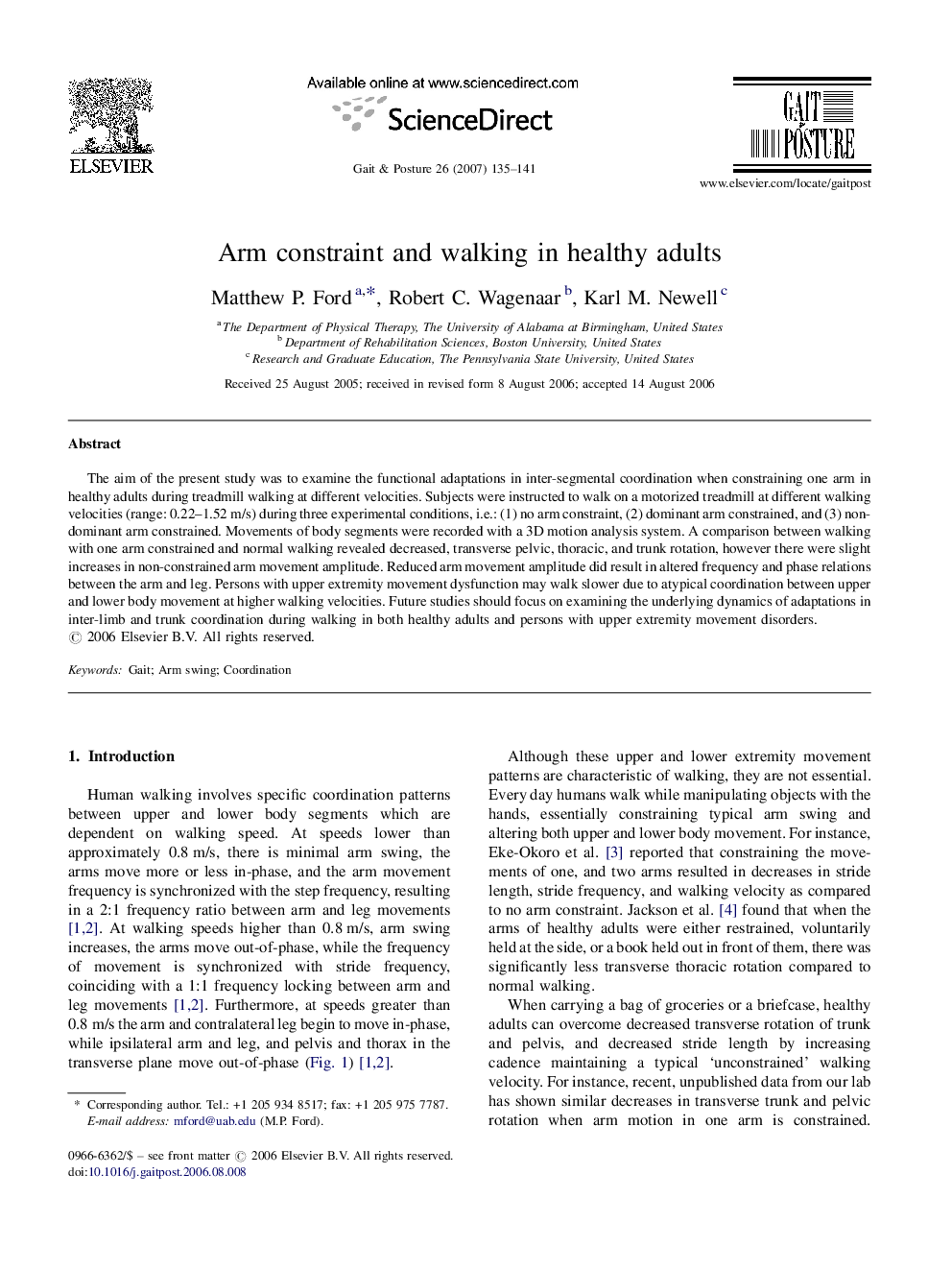| Article ID | Journal | Published Year | Pages | File Type |
|---|---|---|---|---|
| 4058349 | Gait & Posture | 2007 | 7 Pages |
The aim of the present study was to examine the functional adaptations in inter-segmental coordination when constraining one arm in healthy adults during treadmill walking at different velocities. Subjects were instructed to walk on a motorized treadmill at different walking velocities (range: 0.22–1.52 m/s) during three experimental conditions, i.e.: (1) no arm constraint, (2) dominant arm constrained, and (3) non-dominant arm constrained. Movements of body segments were recorded with a 3D motion analysis system. A comparison between walking with one arm constrained and normal walking revealed decreased, transverse pelvic, thoracic, and trunk rotation, however there were slight increases in non-constrained arm movement amplitude. Reduced arm movement amplitude did result in altered frequency and phase relations between the arm and leg. Persons with upper extremity movement dysfunction may walk slower due to atypical coordination between upper and lower body movement at higher walking velocities. Future studies should focus on examining the underlying dynamics of adaptations in inter-limb and trunk coordination during walking in both healthy adults and persons with upper extremity movement disorders.
